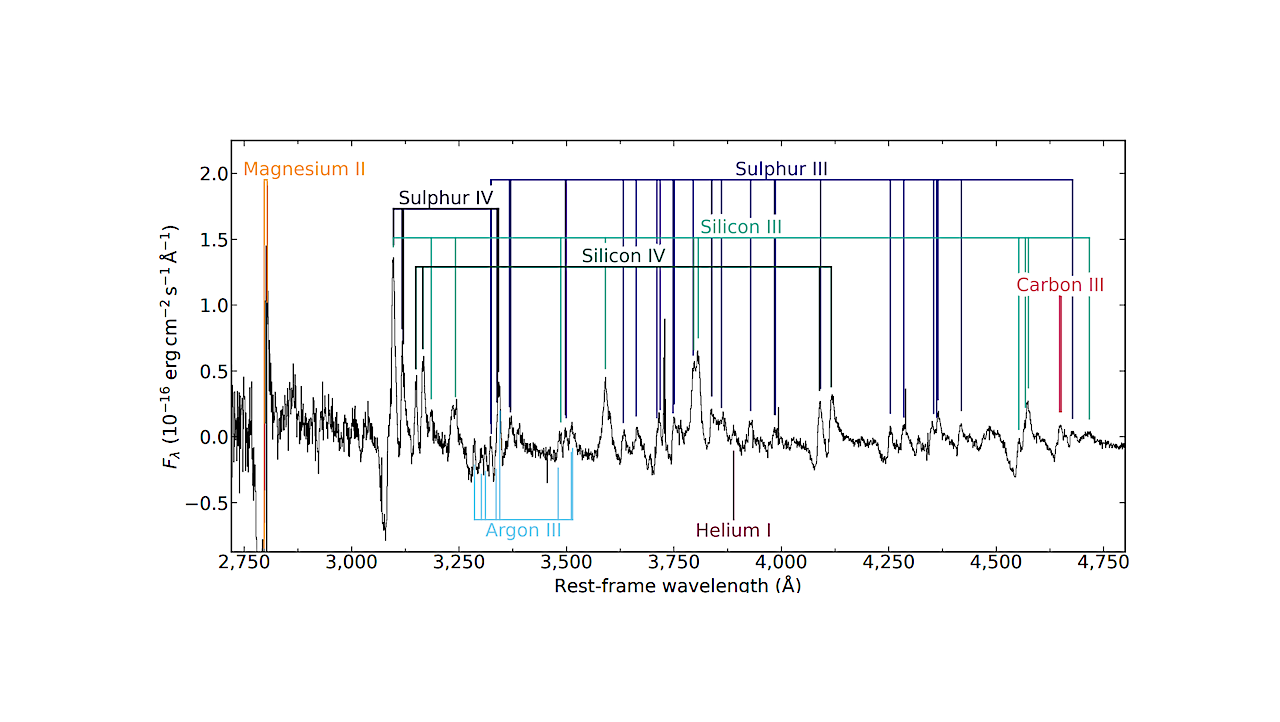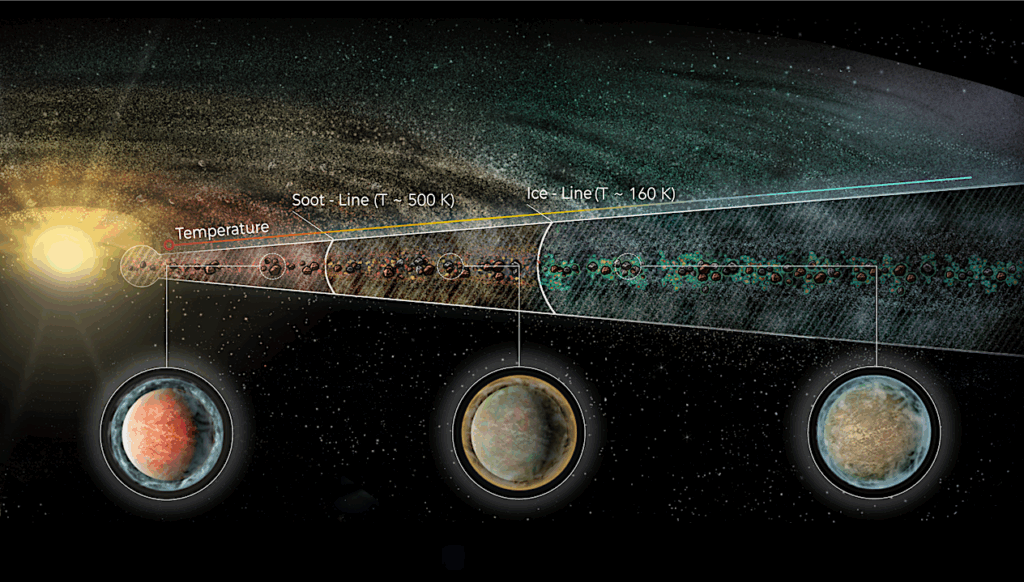A Cosmic Formation Site of Silicon and Sulphur Revealed by a New Type of Supernova Explosion

The cores of stars are the cosmic furnaces where light elements are fused into heavier nuclei. The fusion of hydrogen to helium initially powers all stars. The ashes of the fusion reactions are then predicted to serve as fuel in a series of stages, eventually transforming massive stars into a structure of concentric shells.
These are composed of natal hydrogen on the outside, and consecutively heavier compositions inside, predicted to be dominated by helium, carbon/oxygen, oxygen/neon/magnesium, and oxygen/silicon/sulphur. Silicon and sulphur are fused into inert iron, leading to the collapse of the core and either a supernova explosion or the direct formation of a black hole.
Stripped stars, where the outer hydrogen layer has been removed and the internal He-rich layer (in Wolf-Rayet WN stars) or even the C/O layer below it (in Wolf-Rayet WC/WO stars) are exposed, provide evidence for this shell structure, and the cosmic element production mechanism it reflects.
The types of supernova explosions that arise from stripped stars embedded in shells of circumstellar material (most notably Type Ibn supernovae from stars with outer He layers, and Type Icn supernovae from stars with outer C/O layers) confirm this scenario.
However, direct evidence for the most interior shells, which are responsible for the production of elements heavier than oxygen, is lacking. Here, we report the discovery of the first-of-its-kind supernova arising from a star peculiarly stripped all the way to the silicon and sulphur-rich internal layer.
Whereas the concentric shell structure of massive stars is not under debate, it is the first time that such a thick, massive silicon and sulphur-rich shell, expelled by the progenitor shortly before the SN explosion, has been directly revealed.
Steve Schulze, Avishay Gal-Yam, Luc Dessart, Adam A. Miller, Stan E. Woosley, Yi Yang, Mattia Bulla, Ofer Yaron, Jesper Sollerman, Alexei V. Filippenko, K-Ryan Hinds, Daniel A. Perley, Daichi Tsuna, Ragnhild Lunnan, Nikhil Sarin, Sean J. Brennan, Thomas G. Brink, Rachel J. Bruch, Ping Chen, Kaustav K. Das, Suhail Dhawan, Claes Fransson, Christoffer Fremling, Anjasha Gangopadhyay, Ido Irani, Anders Jerkstrand, Nikola Knezevic, Doron Kushnir, Keiichi Maeda, Kate Maguire, Eran Ofek, Conor M. B. Omand, Yu-Jing Qin, Yashvi Sharma, Tawny Sit, Gokul P. Srinivasaragavan, Nora L. Strothjohann, Yuki Takei, Eli Waxman, Lin Yan, Yuhan Yao, WeiKang Zheng, Erez A. Zimmerman, Eric C. Bellm, Michael W. Coughlin, Frank. J. Masci, Josiah Purdum, Mickael Rigault, Avery Wold, Shrinivas R. Kulkarni
Comments: 48 pages, 12 figures and 10 tables. Submitted to a high-impact journal. The reduced spectra and photometry will be made available via the journal webpage and the WISeREP archive after the acceptance of the paper
Subjects: High Energy Astrophysical Phenomena (astro-ph.HE)
Cite as: arXiv:2409.02054 [astro-ph.HE] (or arXiv:2409.02054v1 [astro-ph.HE] for this version)
https://doi.org/10.48550/arXiv.2409.02054
Focus to learn more
Submission history
From: Steve Schulze
[v1] Tue, 3 Sep 2024 17:00:43 UTC (3,626 KB)
https://arxiv.org/abs/2409.02054
Astrobiology, Astrochemistry,








